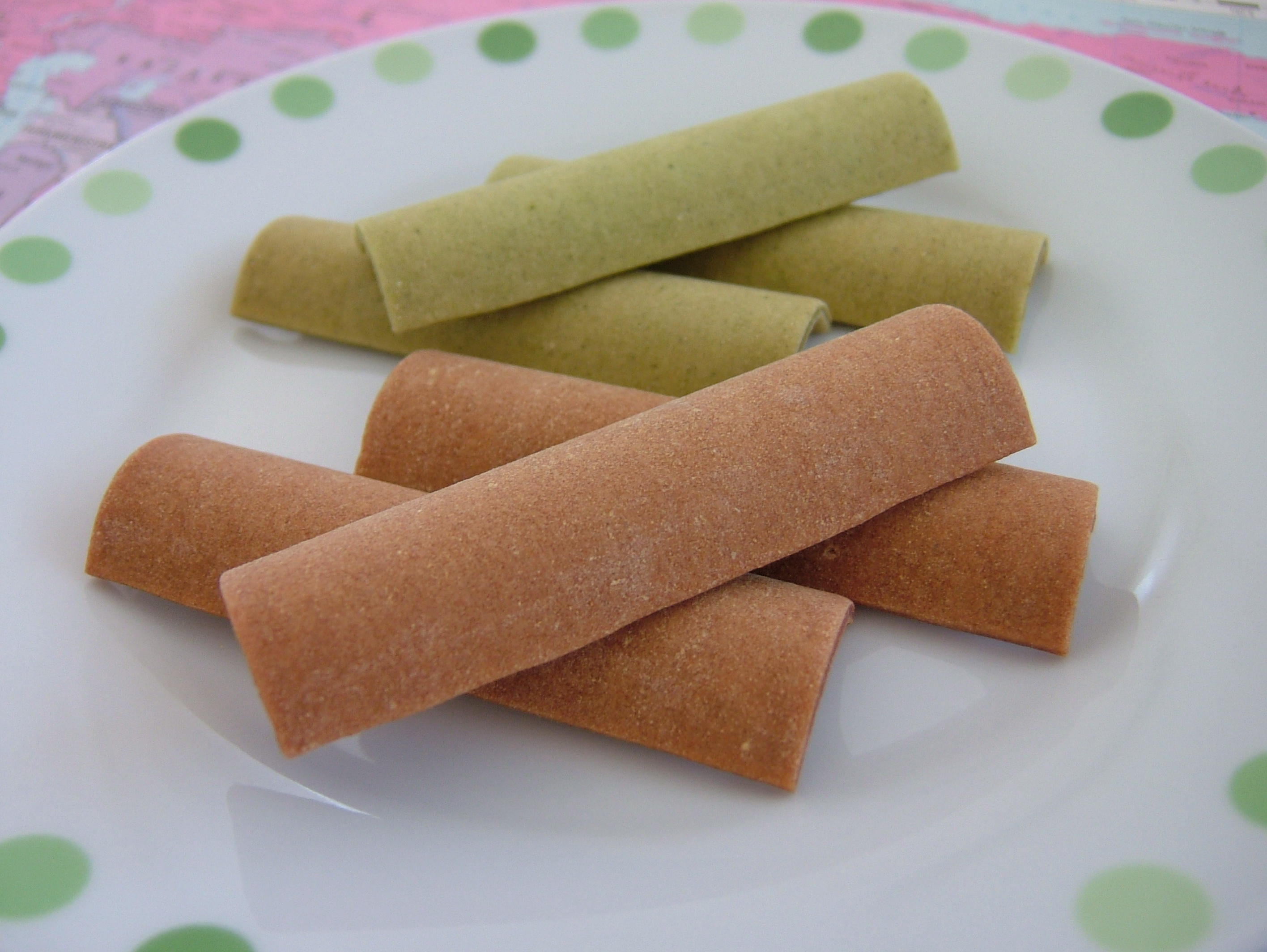I spent my vacation over New Years traveling around Central Japan and the Kansai region. New Year's Eve was in Kyoto, and in addition to a little sightseeing a picked up a few traditional things.
My gift for the office was a box of yatsuhashi, which most likely Kyoto's most iconic food. It's a lightly sweet snack that is essentially a souvenir sweet these days. It comes in two forms and several flavors.
The baked version is mostly found in curved long triangles, similar to a stick of gum curved into a long semi-circle.
In its raw form, it's a soft, flexible dough. Many prefer the raw, unbaked yatsuhashi, which is usually cut into squares about 4" in size and folded into a triangle with a small bit of red bean paste filling inside.
The "basic" flavor is cinnamon, and unlike most snacks in Japan, the cinnamon can be quite pronounced. But baked yatsuhashi is also found in matcha (green tea), and raw yatsuhashi is found in at least half a dozen non-traditional flavors, like strawberry, chocolate, and yuzu (a sweet lemon-like fruit). Chocolate might be my favorite, although the other flavors are pretty good too, and the traditional cinnamon is certainly good as well!
A gift to myself (as a sampler for the blog, naturally!) was the box you see above. The shopping street leading to Kiyomizu-dera Temple in Kyoto is full of, well, shops, mostly selling souvenirs and traditional goods. After picking up some yatsuhashi, I wandered into a different store that had a shelf of small jellies and some boxes to pack them in. I grabbed a nine-pack box (there are larger sizes, too) and picked out a selection of gorgeous sweets.You can see my non-harmonious arrangement above. One of these wasn't really a jelly (top-left) but was okay-tasting; the rest were mild but sweet. They're really beautiful, though! The sweets go by the name of wagashi, and are generally served with tea. As with most Japanese sweets, the base is usually mochi and/or anko, or fruit jellies. I believe the form above is namagashi, a "wet" type made fresh without preservatives.
Japan has an obsession with fruit flavors with dessert, and the fruits themselves are usually fairly expensive still too. Grapes, apples, and strawberries aren't just snacks here. Gummy candies are all over the place with fruit flavors - fine by me, because I love them! These are much milder, but I think they would go great with a cup of tea on this cold winter night!























































